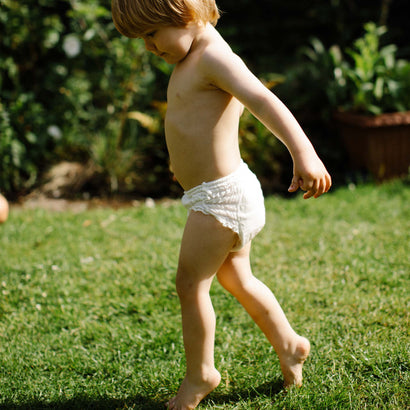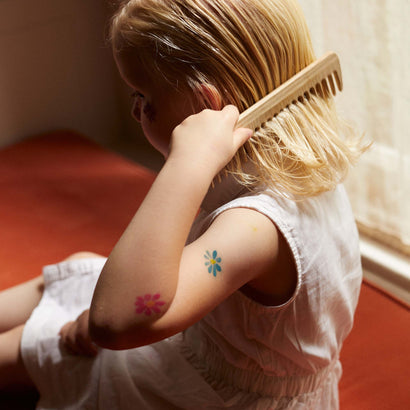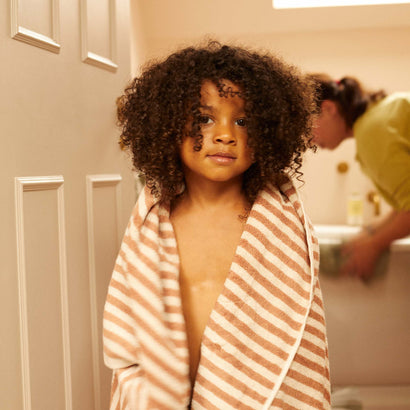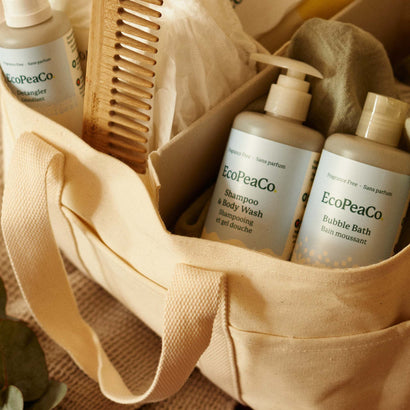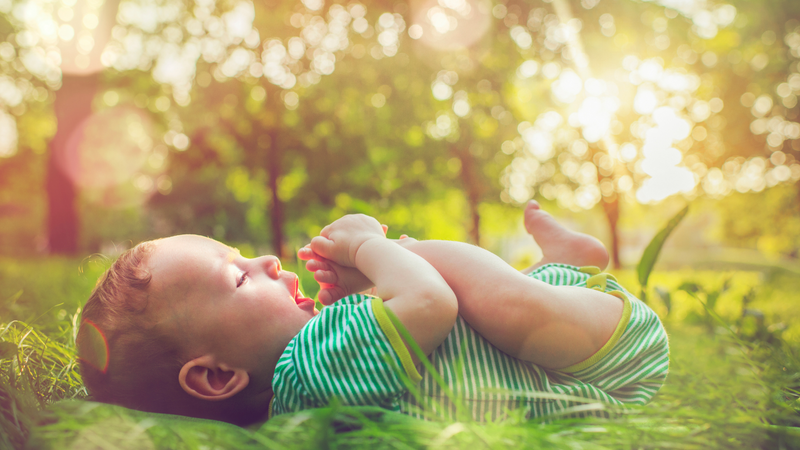How to Find the Right Diaper Size for Your Baby
Key Takeaways
Diaper sizes vary by brand and are based on weight and absorbency. A well-fitting diaper should be snug but not too tight, with no gaps or red marks. If you notice leaks, tightness, or discomfort, it’s time to adjust!
Finding the right diaper size is crucial for your baby’s comfort and to avoid leaks. Since sizes vary across brands, your baby may not always wear the same size in different products. Growth spurts and weight changes also mean the ideal size today might not be the best fit in a few weeks.
This guide will help you choose the right size and ensure your baby stays dry and comfortable.
How Do Diaper Sizes Work?
Diaper sizes are determined by weight and how much liquid they are designed to hold, and they often vary across brands. This is why you will see varying sizes across parameters across brands and why your baby may not necessarily be the same size from one brand to another.
Because of this, and because ours are sized for maximum absorption, we’ve put together a simple guide to help you determine the right size of Eco Pea diapers to choose for your baby.
Diaper Size Calculator
To simplify the process of finding the right diaper size, use our Diaper Size Calculator. Simply enter your baby’s weight, and our calculator will recommend the best Eco Pea diaper size for a secure and comfortable fit.
How to Tell if a Diaper Fits
A properly fitting diaper should provide comfort and prevent leaks. Signs of a good fit include:
-
The diaper sits just below your baby’s belly button without being too tight or loose.
-
The fasteners close easily without stretching or pulling.
-
No red marks appear on the waist or thighs after removal.
-
The leg openings fit snugly but don’t leave imprints.
-
You can fit two fingers under the waistband when fastened.
-
The diaper stays in place without frequent adjustments.
Eco Pea diapers are made with soft, plant-based materials to ensure a comfortable fit, even for babies with sensitive skin.

Signs a Diaper is Too Small
If a diaper is too small, it can cause discomfort and leaks. Signs your baby may need a bigger size include:
- Frequent leaks or blowouts around the legs and back.
- Red marks around the waist or thighs.
- Difficulty fastening the diaper without stretching the tabs.
- The top of your baby’s bottom is exposed when the diaper is on.
- Fussiness or discomfort while wearing the diaper.
Signs a Diaper is Too Big
A diaper that is too large won’t provide proper protection and can cause leaks. Signs it may be too big include:
- Gaps between the diaper and your baby’s legs.
- A loose waistband that doesn’t sit securely.
- Fasteners overlap significantly.
- The diaper shifts out of place easily.
- Excess material bunches up when your baby moves.
If a diaper is too big, don’t discard it—your baby will grow into it. Eco Pea’s flexible fit ensures your baby remains comfortable as they transition between sizes.
When to Change Diaper Sizes
As you can see, there is some overlap between diaper sizes. If you're not sure what diaper size is best for them, you'll want to consider the following:
- Frequent blowouts and leakage issues? If so, it's time to size up your diapers.
- Having to tug on tabs to fasten the diaper? It's time to move up a size.
- Red marks appearing on baby's waist and/or thighs? Think about changing sizes.
If you have a diaper subscription with Eco Pea, you can easily change sizing (and even order multiple sizes) within your account to ensure you get the right size every time.
What Eco Pea Diaper Size is Best for Your Baby?
Eco Pea diapers are not your average diaper. Designed for maximum absorption, comfort, and sustainability, our diapers feel extra soft and luxurious while doing the job for both daytime and overnights.
Our sizing looks a bit different than other diaper brands because our diapers have been designed to absorb the most liquid and, therefore, can fit on the larger side. Fit will vary depending on the child, so always use our diaper size calculator before choosing your diaper size.
How to Weigh Your Baby at Home
Since babies gain weight quickly between doctor visits, knowing their weight helps determine diaper size.
A trick is to get on the scale and note your weight, then get back on the scale with your baby. The difference in the two numbers is your baby’s approximate weight. For example, if you get on the scale and you’re 140lbs, and you’re 155lbs when holding your child, they’re about 15lbs.
Finding the right diaper size can feel tricky, but we hope this guide and our diaper size calculator make the process smoother. When you find the sweet spot with diaper size, your parent’s intuition will likely get a ping.
With Eco Pea, diaper changes become easier, leaks are less of a worry, and most importantly, your little one stays comfy, dry, and happy.



